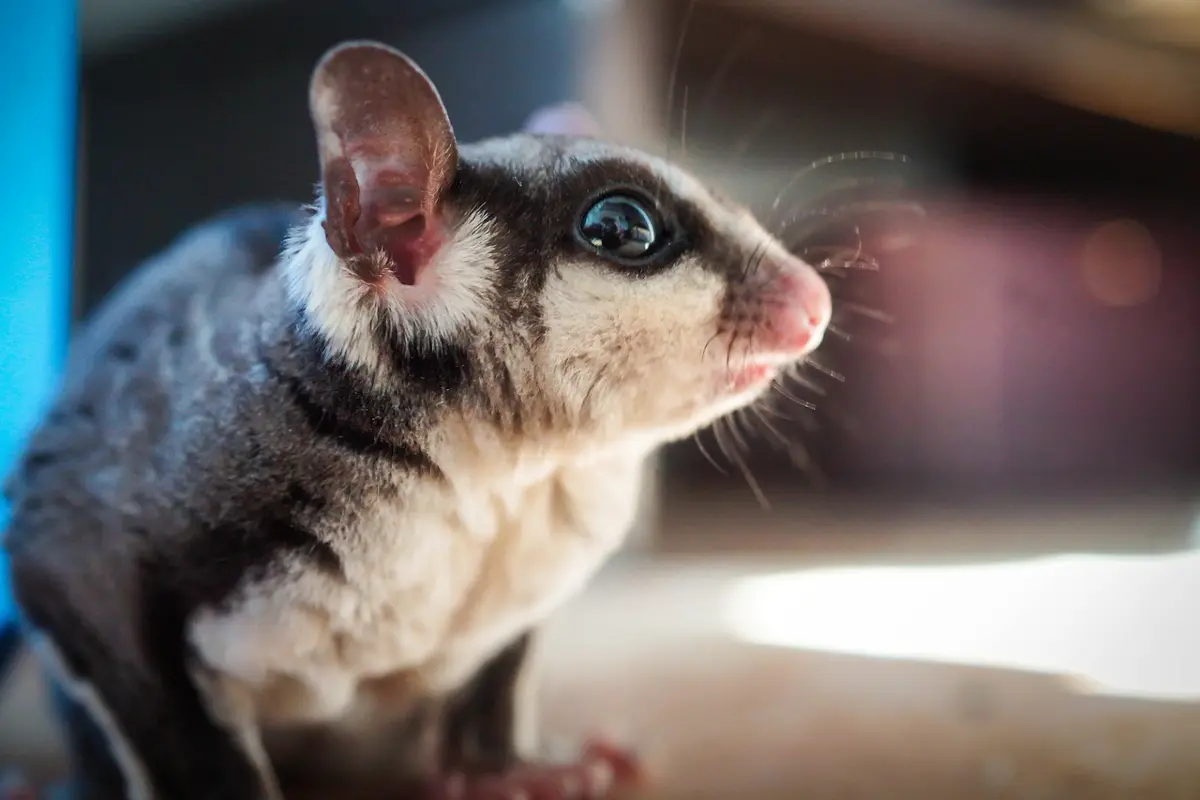Anxiety is something of concern, even in humans. Separation anxiety in sugar gliders occurs when they are separated from their human caretakers or their fellow sugar gliders, as they are known for seeking companionship and forming tight-knit groups.
Sugar gliders are captivating marsupials. Although their endearing appearance may lead some to mistake them for mere pets, these are emotional and community-driven creatures that boast complex social bonds.
In this comprehensive guide, we will discuss the essential aspects of separation anxiety in sugar gliders, including recognizing the symptoms, understanding the causes, and managing the behaviors associated with this anxiety.
We will also cover the importance of a nurturing environment and forming strong social connections when caring for these unique animals.
Recognizing Separation Anxiety in Sugar Gliders
A crucial aspect of properly caring for a sugar glider is understanding and recognizing the signs of separation anxiety. Identifying these symptoms will empower caretakers to provide the support needed to alleviate anxiety-related stress in their furry companions.
-
Decreased Appetite
When experiencing separation anxiety, sugar gliders often exhibit a decrease in appetite, leading to potential weight loss and malnourishment. Regularly monitoring food consumption will help caretakers remain vigilant to any sudden changes in eating patterns.
-
Lethargy
Sugar gliders coping with separation anxiety may appear excessively sleepy or inactive. Displaying a lack of interest in playful activities is a cause for concern, as it could indicate emotional distress.
-
Self-Harm
In extreme cases, sugar gliders may resort to self-harm as a result of separation anxiety. Biting, over-grooming, or purposefully injuring themselves are signs of severe emotional distress that warrant immediate intervention.
-
Increase in Vocalizations
An anxious sugar glider may vocalize more frequently and at a higher pitch than usual. These persistent noises may resemble persistent “crabbing” or high-pitched crying.
-
Pacing and Crabbing
In addition to excessive vocalizations, sugar gliders might develop restless behaviors such as pacing or excessive crabbing (a unique sugar glider behavior that resembles snapping or growling) when experiencing separation anxiety.
Understanding the Causes of Separation Anxiety in Sugar Gliders
To effectively address separation anxiety in sugar gliders, it is essential to understand the potential causes behind it. Identifying these root aspects can help caretakers to better prevent and manage anxiety in their pets.
-
Environmental Changes
Environmental changes or disruptions can significantly contribute to separation anxiety in sugar gliders, as they are sensitive to their surroundings. For instance, alterations in their habitat, moving to a new home, or the absence of a familiar human or sugar glider companion can cause stress and anxiety symptoms.
-
Lack of Social Stimulation
Sugar gliders are highly social creatures, and the absence of adequate social interaction can lead to separation anxiety. Deprivation of these essential emotional needs, including companionship and engaging activities, can result in physical and mental health issues for the sugar glider.
-
Psychological Factors
It is important to consider that individual sugar gliders may be more prone to anxiety than others due to their unique temperament. Each sugar glider possesses its distinct personality and sensitivity levels, affecting its responses to stimuli and potentially exacerbating anxiety symptoms.
-
Disruptions in Routine
Sugar gliders thrive on consistency and routine. Any significant disruptions to their usual schedule may cause stress and anxiety. This can include changes in feeding times, playtime, or even the absence of familiar human caretakers.
Managing Separation Anxiety in Sugar Gliders
Once the signs and causes of separation anxiety have been identified, caretakers can implement strategies to alleviate stress for their sugar gliders.
The following tips will help address anxiety and promote emotional well-being:
-
Establish a Bonding Routine
To reduce separation anxiety in sugar gliders, establish a consistent bonding routine that includes playtime, interaction, and getting close to them. By reinforcing these connections, sugar gliders will feel more secure in their environment, thus reducing anxiety.
-
Increase Environmental Enrichment
Enhancing a sugar glider’s habitat with toys, climbing structures, and bedding can provide much-needed mental stimulation and maintain emotional well-being. An enriched environment will also aid in mitigating the stress arising from separation anxiety.
-
Facilitate Social Integration
Sugar gliders naturally seek companionship from their own kind, making it essential to consider housing them with at least one other sugar glider to foster social connections.
-
Professional Consultation
If separation anxiety symptoms persist or worsen, seeking guidance from an experienced veterinarian specializing in exotic animals is recommended. They can offer valuable advice or prescribe medications, dietary changes, or behavioral therapies to aid in mitigating anxiety symptoms.
Creating a Nurturing Environment for Sugar Gliders
Beyond just addressing separation anxiety, promoting an overall nurturing environment for sugar gliders will keep them from emotional distress.
The following measures will ensure the well-being of these charming creatures:
-
Regular Health Check-ups
Routine veterinarian visits will monitor sugar gliders’ overall health and identify any potential issues, including those related to mental health.
-
Adequate Sleep
Since sugar gliders are nocturnal animals, ensuring they have a comfortable and quiet space to sleep during the day is fundamental to their well-being.
-
Proper Diet
A balanced diet is vital for sugar gliders’ physical and emotional health. Supplying a nutritious diet tailored to their needs will contribute positively to their mental well-being.
Closing Thoughts
Sugar gliders are enchanting creatures that captivate us with their lively personalities and strong social desires.
As guardians of these unique animals, it is our responsibility to provide the ample socialization and nurturing environments they require to thrive.
By remaining informed about the causes and symptoms of separation anxiety in sugar gliders, we can foster secure bonds and promote their overall happiness and well-being.
